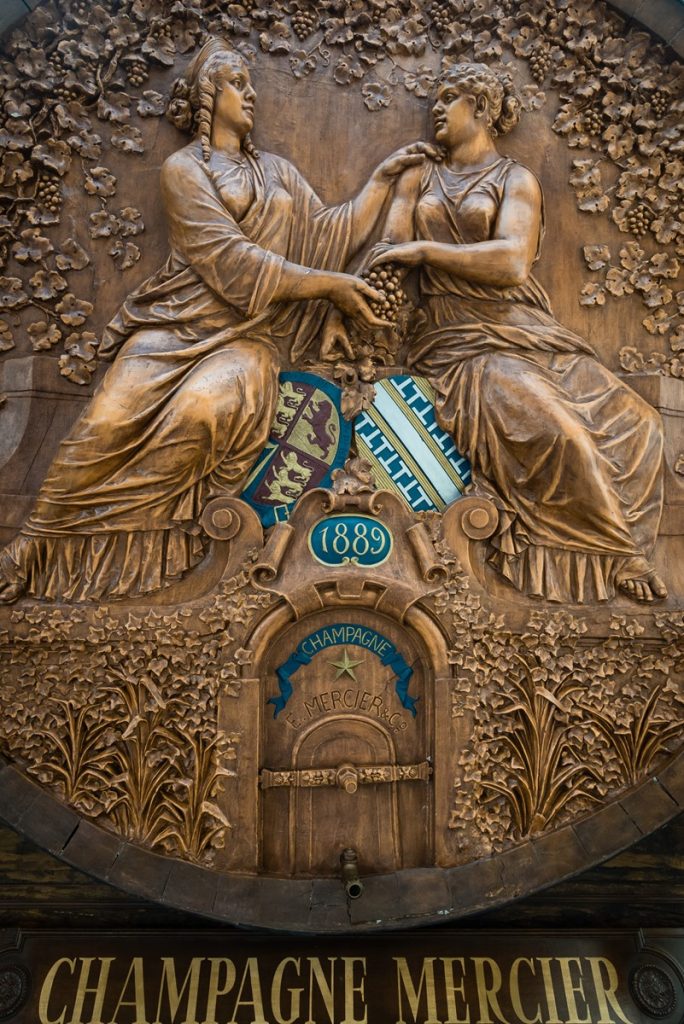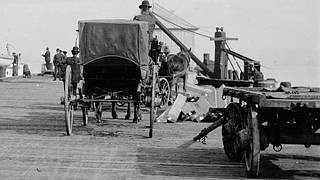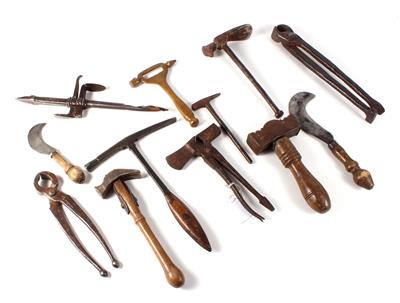
The Mercier Oak Barrel Deception: A Wine Vault Too Vast to Believe?
A cask so vast it mocks reason—built in one year, or hiding a truth too big to swallow?

Explore the mystery of the Mercier Oak Barrel in Épernay, France, with Fabricated Foundations. This colossal 200,000-liter wine cask, allegedly built in 1874, stands as a champagne history icon. But could a vineyard crippled by phylloxera craft this massive barrel in just one year using hand tools? Or is the Mercier Oak Barrel a relic of a hidden history, rebranded to mask a forgotten past? Join us as we uncover the secrets behind this 19th-century engineering enigma.
Let’s crack the barrel open and see what spills out.
The Official Story: A One-Year Marvel
The history books pour a clean tale. In 1874, Eugène Mercier crafted the Mercier Oak Barrel to flaunt his champagne empire at the 1889 Paris Exposition. This 16-meter-tall, 6.5-meter-wide cask was built in a single year by coopers using hand tools. Its specs are jaw-dropping:

- Capacity: 200,000 liters (52,834 gallons)
- Wood Volume: Over 100 cubic meters of oak
- Weight: 70–100 tons empty
All this while the Champagne region reeled from phylloxera, a vine-killing plague. A cathedral of oak in one year? Let that ferment.
The Logistics Problem: Too Big, Too Fast
Let’s break it down. In 1874, they supposedly:
- Felled and seasoned 100–120 cubic meters of oak (~50–60 tons dry)
- Shaped 48 massive 16-meter-long staves with hand tools
- Forged and installed 20–30 tons of iron hoops onsite
- Sealed it with pitch and tested it without modern gauges
One year—365 days—for this feat in a region gutted by economic collapse. Compare it to other 19th-century projects: small wine barrels took months; shipbuilding took years. How did Mercier’s team do it in a fraction of the time?
The Weight of the Lie
Let’s tally the materials:
- Oak Staves: Each 16-meter stave, cut from mature oaks, weighs 1–2 tons green. For 48 staves, that’s 48–96 tons. Felling, seasoning (1–2 years naturally), and hauling from forests 50–100 km away would take months per tree—years for dozens.
- Iron Hoops: 20–30 tons of wrought iron, forged into 6.5-meter hoops. In 1874, France’s iron industry was limping post-war. Custom forging and transport would take months per hoop.
- Total Weight: 70–120 tons empty, plus 200 tons filled—equal to 5–6 modern freight trucks.
- Assembly: Hoisted 16 meters with pulleys and manpower, no cranes, on a vineyard floor. The precision to prevent leaks defies 19th-century coopering.
With horse carts (1–2 tons capacity) and scarce steam saws, this would take years, not months. Where are the timber receipts? The worker rosters? Vanished, like the truth.

The Tech Gap: Tools That Fall Short
In 1874, the Champagne region had:
- Hand tools: Axes, adzes, drawknives
- Steam saws: Rare, slow, and fixed
- Pulleys and ropes: Limited to 5–10 tons per lift

Yet the barrel boasts seamless joints, perfect curves, and industrial-grade ironwork. Compare it to era casks—crude, small barrels for local wine. The leap is staggering. Did Mercier’s coopers master lost techniques, or was the barrel already there?
The Crisis Anomaly: A Vineyard in Ruin
While the barrel was allegedly built, Champagne was:
- Crippled by phylloxera, destroying 40% of vineyards
- Reeling from economic and labor shortages
- Years away from the 1889 Paris Exposition
Yet, in this chaos, they built a 100-ton showpiece in one year? No disruption reports. No supply chain records. Just a polished tale for the fair. Smells like a cover-up.
The Missing Paper Trail
The archives are eerily thin:
- No construction photos—not one image of the build
- No labor rosters—who were the coopers?
- No material logs—no clear trail for oak or iron
In an era when newspapers trumpeted every new winery, why so little noise for this giant? It’s as if the barrel appeared, and the story was crafted later.
The Inherited Hypothesis: A Relic Rebranded
What if the Mercier Oak Barrel wasn’t built in 1874? What if it was uncovered—a relic of a lost era, repurposed to flaunt Mercier’s wealth? Consider:
- Ancient Precedent: Massive wooden structures, like Viking longhouses or Egyptian barges, hint at pre-industrial carpentry mastery. The barrel’s design echoes these.
- Missing Records: No photos, no timber logs, no worker lists—much like the Otago Station or Montsouris Reservoir.
- Global Patterns: Like the Palácio Monroe or Basilica Cistern, its scale and perfection suggest a hidden global infrastructure, erased from history.
Was it a wine cask—or a vessel from a forgotten age, rebranded to stun the world?
Guarded in Plain Sight
The Mercier Barrel stands in Épernay’s cellars, a tourist draw. But access is tight. Photos are restricted. Why guard a “cask”? Could it hold more than wine? Is it, like other Fabricated Foundations, a piece of a buried past, silenced to protect the official story?
The Question They Fear
We don’t claim to know who built the Mercier Barrel. But we ask: Why can’t we question it? Why the missing evidence? Why the secrecy?
Call to Action
What do you think? Could a vineyard in crisis build this 100-ton marvel in one year? Or is the Mercier Oak Barrel a clue to a hidden history? Drop your theories in the comments—let’s expose the deception together.
🔗 Visit fabricatedfoundations.com | Uncover what they covered up


Post Comment